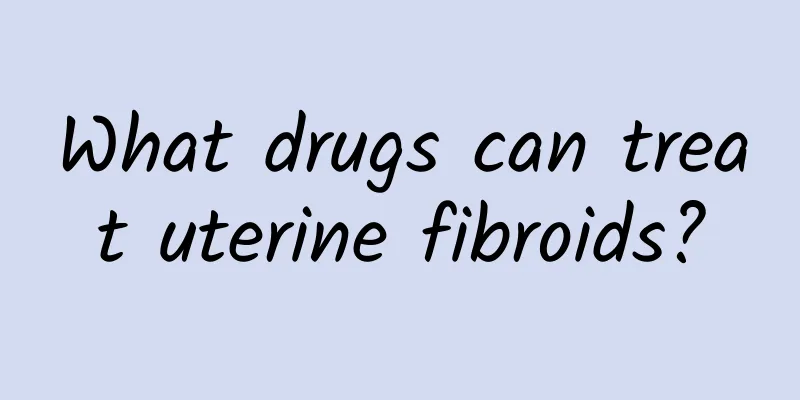What drugs can treat uterine fibroids?

|
What drugs can treat fibroids? The treatment of uterine fibroids depends on the patient's age, the presence or absence of symptoms, the location, size, growth rate, number of the fibroids, the deformation of the uterus, whether reproductive function is retained, and the patient's wishes. 1. Expectant treatment: The fibroids are small, asymptomatic, without complications or degeneration, and have no impact on health. For perimenopausal patients, there are no clinical symptoms. Considering that ovarian dysfunction may cause the fibroids to shrink or shrink. Expectant treatment can be adopted for the above cases, that is, regular clinical and imaging follow-up observations are carried out every 3 to 6 months. The treatment is decided based on the review results. Usually, fibroids shrink naturally after menopause, so no surgery is needed. However, patients with fibroids who are over 40 years old may still be several years away from menopause, so surgery can also be considered. But conservative medication can be used before surgery, and those who are effective can temporarily avoid surgery. It should also be noted that in a small number of postmenopausal women with fibroids, the fibroids do not shrink but grow larger, so follow-up should be strengthened. 2. Drug therapy There are many new developments in drug therapy. 1. Young people who want to preserve their fertility. Those who are infertile or have miscarriage due to fibroids at childbearing age. After drug treatment, the fibroids shrink and promote conception and fetal survival. 2. For premenopausal women, the fibroids are not very large and the symptoms are mild. After taking the medicine, the uterus will shrink and menopause will occur, and the fibroids will shrink accordingly, thus avoiding surgery. 3. Patients who have surgical indications but currently have contraindications and need to be treated before surgery. 4. Patients with concurrent medical or surgical diseases who are unable to undergo surgery or are unwilling to undergo surgery. 5. Before choosing drug treatment, it is advisable to perform diagnostic curettage and endometrial biopsy to exclude malignant changes, especially for those with menstrual disorders or increased menstrual flow. Curettage has both diagnostic and hemostatic effects. |
<<: Is pelvic effusion 22×15mm serious?
>>: Symptoms of premature ovarian failure
Recommend
Food temptation to become a bucket waist knee lift squat training waistline
It’s easy to eat and drink too much during the Ch...
Your menstrual cycle is different every time
Your menstrual cycle is different every time The ...
How are cervical warts generally transmitted?
Cervical warts are a sexually transmitted disease...
Choosing the right "staple food" is also very nutritious! These 3 things prevent cancer, control blood sugar, and help lose weight
When winter comes, we need to eat nourishing food...
Which hospital is best for treating uterine effusion?
Clinically, there are many treatment measures for...
Foods that should not be eaten for uterine fibroids and ovarian cysts
Patients with uterine fibroids and ovarian cysts ...
Lose weight and reduce appetite by soaking black fungus powder in water
When it comes to losing weight, "eat less an...
Does uterine fibroid surgery require curettage? Under what circumstances does uterine fibroid surgery require curettage?
As a gynecological disease, uterine fibroids have...
Three common symptoms of cervical erosion
Patients with cervical erosion are often psycholo...
Eating 6 "onion ices" a day will help you lose weight? Are onions better cooked than raw? Nutritionists break down three myths
Scrambled eggs with onions and beef with onions a...
What dietary therapy methods can help uterine contraction and relieve pain? Share two recipes with you
I believe that abortion is a last resort for wome...
Lichen sclerosus is one of the types of vulvar leukoplakia
The main symptoms of vulvar leukoplakia are tingl...
Why does vaginal candidiasis recur?
Why does candidal vaginitis recur? The recurrence...
Why is recovery after medical abortion important?
Even the smallest side effect of medical abortion...
Is vulvar leukoplakia contagious?
Is vulvar leukoplakia contagious? Vulvar leukopla...









